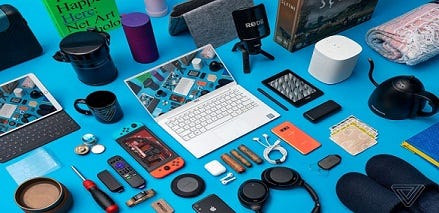People have long associated technology with efficiency, speed, and convenience. Yet in the last decade, it has evolved beyond functionality into a form of personal expression. People use technology not only to work and communicate but also to shape their identities, routines, and even moods. The growing overlap between lifestyle and technology reveals how deeply innovation influences self-care, relaxation, and creative living.
From the moment we wake up to our nightly rituals, devices and digital tools quietly frame our experiences. The lighting in a room adjusts to circadian rhythms, playlists match our emotions, and smart accessories help us feel connected even when we are alone. This merging of utility and enjoyment shows that technology is no longer just a tool; it’s a lifestyle.
The Rise of Lifestyle Tech
In today’s digital landscape, lifestyle technology encompasses far more than smartphones or laptops. It includes any device that enhances mood, personal comfort, or leisure. These innovations reflect how deeply technology has woven itself into daily living.
Wearable fitness trackers, smart aromatherapy diffusers, and connected coffee machines all represent this shift. The goal is no longer just to make life easier but to make it more satisfying. People are using technology to shape how they rest, create, and connect.
This shift has given rise to what many call “emotional tech” products designed to enhance well-being by aligning with the rhythms of human behavior. The focus has turned from pure performance to sensory experience, helping individuals curate moments that feel intentional and restorative.
How Technology Enhances Comfort and Self-Expression
Technology influences not only how we interact with the world but also how we express individuality. Personal devices have become extensions of personal style, blending fashion, design, and function.
Smart home systems allow users to customize their environment with lighting and temperature that reflect their mood. Portable entertainment tools enable immersive relaxation during commutes or downtime. Even everyday accessories, like headphones and wearables, now come in curated designs that reflect aesthetic preferences as much as technical specifications.

The personalization of technology demonstrates a cultural shift toward self-expression through innovation. The device someone chooses often communicates as much about themselves as their wardrobe or décor choices.
The Connection Between Pleasure and Technology
Pleasure and technology have become intertwined through the digital age. People use devices to unwind, discover new art, and connect socially. Streaming platforms, interactive games, and creative tools encourage participation rather than passive consumption.
The sensory experience of modern devices contributes to this pleasure. Haptic feedback, high-definition displays, and sleek design all create a tactile and emotional connection to technology. The satisfaction of engaging with a well-designed device can enhance a person’s sense of control and enjoyment.
Digital tools also provide new ways to explore mindfulness. Meditation apps, sound therapy programs, and virtual nature experiences help users manage stress and improve mental well-being. The idea of wellness now includes both body and digital mind space, showing how tech-driven satisfaction can support a balanced lifestyle.
Compact Tech for an On-the-Go Generation
Portability has become central to modern living. People move seamlessly between work, home, and travel, expecting their devices to adapt. Compact technology solutions from portable chargers to wireless accessories reflect this need for mobility and freedom.
The culture of convenience extends to lifestyle products that offer both portability and personalization. Small, high-performance items that fit in a pocket or bag can enhance the daily experience without disruption.
For many individuals, lifestyle tech includes stylish accessories that blend practicality and relaxation. Even products like vape devices illustrate how form and function coexist in the tech world. Various collections highlight how innovation meets modern leisure, merging personal taste with technological refinement.
Technology today is not just about what it does; it’s about how it fits into life, where convenience and aesthetics meet in motion.
Technology and the Art of Routine
Daily routines define how we live, and technology now enhances these rituals in subtle but meaningful ways. Whether it’s brewing coffee through an app-connected machine or setting an automated playlist for morning motivation, small integrations of tech create smoother transitions between tasks.
These habits shape the rhythm of the day and contribute to emotional stability through routines supported by technology free mental energy for creativity and reflection. In a world where overstimulation is common, thoughtful tech use becomes an act of self-care.
Over time, these consistent experiences create a sense of predictability and comfort. The power of repetition, aided by smart systems, brings structure to an increasingly fast-paced environment.
The Balance Between Connectivity and Presence
The challenge for many is maintaining awareness while using technology. Connection can easily become a distraction if you don’t establish boundaries. As digital tools continue to multiply, the importance of conscious engagement grows stronger.
Mindful Devices technology use encourages intentional connection, knowing when to engage and when to step back. Turning off notifications, scheduling screen-free periods, and prioritizing real-world experiences prevent digital overload.
Balanced connectivity allows people to appreciate the benefits of technology without losing touch with physical surroundings. By being selective about what adds value, users can shape an experience that supports presence rather than replaces it.
The Role of Tech in Modern Socialization
Technology is also transforming how communities form and communicate. Shared interests now thrive through online spaces that connect people across borders. Music lovers, travelers, and creators use digital platforms to share insights and build friendships.
Video chats, collaborative apps, and social hubs bridge distance in once impossible ways. This has changed the social landscape, redefining what closeness means in a digital era.
At the same time, these networks give rise to micro-communities, tight-knit groups united by shared values or hobbies. Whether it’s photography enthusiasts, wellness advocates, or design professionals, the internet enables new forms of belonging.
By blending technology with social intention, people are crafting communities that are as supportive as they are innovative.
Technology as a Wellness Companion
Wellness isn’t just about fitness and nutrition. It now includes mental, emotional, and environmental well-being, all areas that technology can support when used responsibly.
Smart home environments can promote rest through lighting that adjusts to circadian patterns. Apps that track hydration, mindfulness, or breathing exercises encourage self-awareness. Virtual platforms for therapy and support networks expand accessibility for mental health care.
Simple ways technology supports wellness include:
- Encouraging consistent mindfulness through guided meditation or breathing tools.
- Tracking health metrics to promote awareness of the body and habits.
- Enhancing rest with smart lighting and sound tools that improve sleep quality.
When integrated thoughtfully, these tools complement rather than control, helping individuals find harmony between productivity and relaxation.
Digital Design as Modern Art
The visual appeal of technology has elevated it to an art form. Design aesthetics now hold as much value as performance. Whether it’s the curve of a smartphone, the lighting of a gaming setup, or the minimalism of wearable tech, design decisions shape emotional response.
This focus on form and feeling connects technology to creative expression. People decorate their digital environments much like they would a physical space, choosing wallpapers, widgets, and layouts that reflect identity.
This digital artistry reflects a universal desire for beauty and personal expression. Technology becomes not just functional, but an extension of creativity and taste.
Sustainable Tech and Mindful Consumption
Sustainability is emerging as a central theme in lifestyle technology. Consumers increasingly prioritize eco-friendly devices and companies that emphasize ethical production. Rechargeable systems, recyclable materials, and repairable designs are shaping the next generation of products.
Adopting sustainable tech habits contributes to both environmental health and personal mindfulness. It encourages a sense of responsibility toward the planet while reinforcing thoughtful purchasing decisions.
Brands that focus on longevity and repairability over disposability appeal to users who want their devices to last. This shift mirrors a broader cultural movement toward slower, more meaningful consumption.
The Emotional Future of Technology
As innovation continues, technology will become even more emotionally intelligent. Devices will learn to adapt to mood, predict preferences, and encourage healthy behavior. Artificial intelligence and sensor-based technology are already making interactions more intuitive and personalized.
The next generation of tech will likely focus on enhancing emotional experiences rather than simply optimizing performance. This evolution places human well-being at the center of design, bridging the gap between machine precision and human feeling.
The growing field of lifestyle technology represents this future one where convenience, beauty, and emotional balance intersect.
Digitized Lifestyle
Technology is shaping not only how people live but also how they feel. It defines comfort, fosters creativity, and strengthens connection when used with awareness.
As society moves further into a digitally integrated world, mindful engagement with technology will become essential. Balancing innovation with humanity allows people to enjoy both productivity and presence.
Modern devices, whether for work, wellness, or leisure, now serve as partners in daily life. The future of lifestyle technology lies not in what it replaces, but in what it enhances: the subtle pleasures that make living feel complete.







